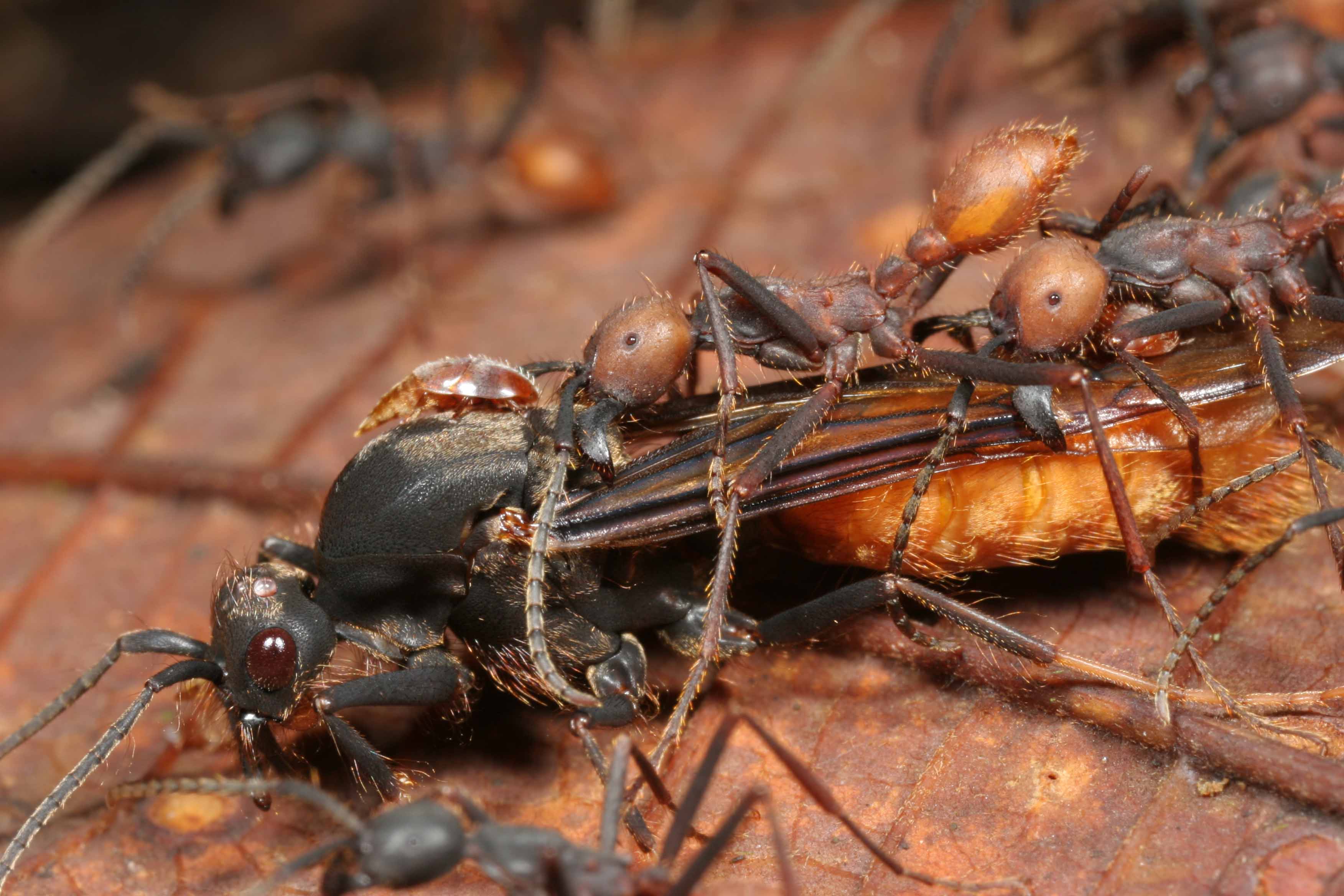Life Cycle and Reproduction
During their first 20 day stage of the activity cycle, the
queen will lay up to 100,000 eggs. The eggs are then taken
away and stored in the bivouac's central area (Encyclopedia of
Life 2013, Animal Diversity 2012). The queen mates only
once, but has an ability to store enough sperm to fertilize all
of the eggs with one mating session. Although more research is
needed for accuracy, the queen alone will participate in five
mating sessions in her lifetime. When a winged male worker is
found, the other workers will bring that worker to the queen in
which she will mate with. This is considered a polyandrous
mating system, or mating with several different males within a
season (Animal Diversity 2012).

After about a 48 hour period, the
male that mated dies. This is a very excellent and elaborate
form of sexual selection for genetic diversity. These eggs hatch at the end of the 20 day period, and the nomadic phase
begins. During the nomadic phase, the colony exits the bivouac
and moves to a different area where the raids then become more frequent and intense in order to feed the new hatchlings (Encyclopedia
of Life 2013,
Animal Diversity 2012). The larvae in the eggs go into
metamorphosis near the end of the 20 day bivouac phase. The
new larvae goes through five stages before metamorphosis begins. At the
end of the metamorphosis, the adult forms eclose, or emerge from
the egg. The existing workers help the new Army Ants eclose
from their cocoons. The result is the new Army Ant adults (Animal
Diversity 2012, Encyclopedia of Life 2013).
It is very difficult to keep this species in captivity, so
estimated lifetimes are very rough in accuracy. There are
some age estimates for the specific positions in the Army Ant
heirarchal system. Workers will live for months at a time
while the queens of the hive will live for multiple years
(Animal Diversity 2012).
At random times of a colony's life, queens will be born from a
spawn of larvae. This is the signal of new colonies being
born. The queens have no wings, so the workers will care
for the new queens while still in the parent colony. When
the new queen fully develops, the colony will completaly
separate, but until that time the workers will shuffle between
parent and external colonies (Encyclopedia of Life 2013).

Go on to Interactions
Go back to Habitat and
Geography